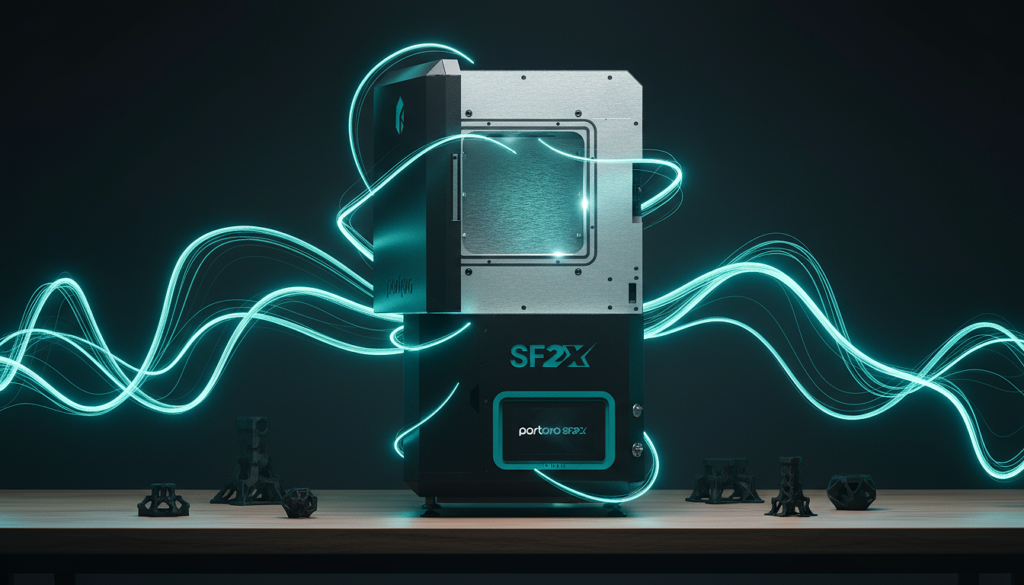
In the dynamic world of additive manufacturing, the finishing phase—where a raw 3D-printed part becomes something usable, refined and production-ready—is often the bottleneck. That’s where the PostPro SF2X from Additive Manufacturing Technologies (AMT) steps in. This system brings scalability, precision and eco-conscious chemistry into vapor-smoothing workflows, bridging the gap between prototype and full production.
The PostPro SF2X is AMT’s latest desktop vapor-smoothing system designed specifically to serve medium to low-volume production and R&D environments. It builds on the company’s earlier SFX system with double the chamber capacity—while maintaining a compact footprint. TCT Magazine+3TrendHunter.com+33DPrint+3
Key highlights include:
A 24-litre chamber capable of handling larger batches of parts. 3DPrint+1
Processing cycle times around 1.5-2 hours, or as fast as 30-45 minutes with the built-in PostPro AI optimisation. 3DPrint+1
Compatibility with a wide range of materials—PA11, PA12, TPU, PP (with dedicated consumable), and select FDM materials such as ULTEM® and ONYX®. TrendHunter.com+1
Uses AMT’s PostPro Pure consumable chemistry, claimed to be non-flammable, biodegradable, recyclable, FDA-approved, non-halogenated and non-toxic. TrendHunter.com+1
Price starting around €24,900 (early orders) and first deliveries anticipated in early 2026. 3DPrint
In effect, the PostPro SF2X brings high-end finishing capabilities once reserved for large factory setups into a more accessible package for smaller producers and labs.
One of the biggest challenges in 3D printing is taking parts off the printer and turning them into final-parts—smooth, sealed, ready for use. Traditional post-processing often requires manual labour, chemicals, or time-consuming methods. The SF2X automates and standardises this step, offering what AMT calls “true industrial performance in a compact, affordable package.” 3DPrint+1
Because the system supports multiple materials—including commonly used engineering thermoplastics like PA12 and ULTEM®—users can deploy it across a variety of part types: functional prototypes, end-use parts, automotive components, and more. The AI-assisted workflow means smoother surfaces without compromising dimensional accuracy or material integrity. TrendHunter.com+1
The consumable chemistry (PostPro Pure) is touted as more environmentally friendly than older smoothing chemistries: non-toxic, recyclable and designed for a closed-loop system. That aligns with growing demand for greener AM workflows. TrendHunter.com+1
Additionally, higher throughput and better finishing mean lower cost per part and faster time-to-market—crucial for companies scaling up production.
Here’s a breakdown of what stands out and what you should consider if you’re evaluating the SF2X:
Features to highlight:
Double the chamber capacity compared to its predecessor (still footprint-efficient).
AI-driven optimisation of vapour flow, temperature and timing, which helps reduce cycle times and ensure consistency.
Material versatility makes it suitable for both prototyping and end-use production.
Better surface finish, potentially closing the gap between 3D-printed and injection-moulded parts—especially in visible or functional applications.
Things to check/ask:
Footprint and facility requirements: While compact for industrial equipment, you’ll still need space, ventilation, and safe chemical handling infrastructure.
Material validation: Confirm that the specific material-grade you use (brand, filler, geometry) is compatible and validated for the system.
Batch size vs cost: Does the throughput and cycle time justify the investment for your volume?
Consumable lifecycle & cost: What are the operational costs of the PostPro Pure consumable and maintenance?
Post-processing workflow integration: How easily will this system fit into your current workflow (design, printing, cleaning, inspection)? Automation potential may vary.
Lifecycle and footprint overhead: Even though integrating finishing is great, you still need inspection, QA and possibly additional post-processing steps depending on application.
The PostPro SF2X is especially suited for:
Small to mid-scale manufacturers deploying functional 3D-printed parts that require high end surface finish and consistency.
R&D labs and universities that need advanced smoothing capability but at a lower entry cost compared to large production lines.
Service bureaus offering post-processing as a service—they can increase throughput and improve finish quality, making their offering more competitive.
Industries like automotive, medical devices, consumer goods where aesthetics, dimensional accuracy and material performance all matter in finished parts—not just function.
If you’re a hobbyist or occasional user, the investment may be too heavy—but if finishing is a bottleneck for your 3D workflow, this machine is compelling.
The PostPro SF2X represents a notable step in the evolution of additive manufacturing workflows. It addresses one of the less glamorous but critically important parts of production: finishing. By offering higher throughput, better material support and smarter automation in a compact system, AMT has given users a credible way to scale beyond prototype and into small-volume production with confidence.
If you’re evaluating how to bring your 3D-printed parts closer to “real-world ready,” this system deserves serious consideration. Its blend of technology, flexibility and cost-effectiveness is well aligned with the next wave of industrial additive manufacturing.